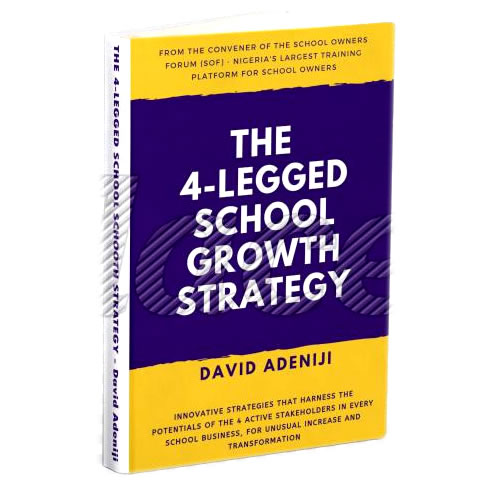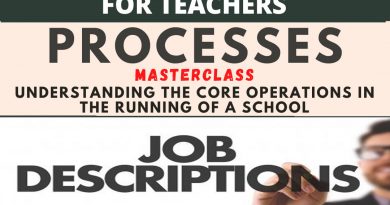USE THE ROD VS SPARE THE ROD – PART 1 – FULL LECTURE
Thanks for joining in this evening once again. I must appreciate the members of Forum 2 for starting up this discuss. I lent my voice earlier in one of the SOF Charges of the day, 5th January, 2018 to be precice. But I just took excerpts from the full lecture. Today, we’re having part one. In doing informed justice to this topic, I healthily utiluzed resource from the following sources:
1. The Child Rights Acts of 2003
https://www.unicef.org/nigeria/ng_publications_Childs_Right_Act_2003.pdf
2. The African Charter Article on the Rights and Welfare of a Child
http://www.acerwc.org/acrwc-full-text/
3. AN Examination of The Child Rights Protection And Corporal Punishment In Nigeria
https://www.ajol.info/index.php/naujilj/article/viewFile/82391/72546
The rod is an important instrument for correction and instilling lifelong character and attitude in children when used in the right (varying) proportion, at the right timing, within the right children age range and in the right frame of mind. Please note the key conditions here – in the right proportion, at the right timing, within the right children age range and in the right frame of mind. All these will be expounded in the course of this series
There has been an unending argument as to whether to completely spare the rod or use it on children. Without trying to sound like an overall authority, I think I have an understanding worth listening to.
AS EVERYONE JOINS THE LECTURE, LET ME UPDATE YOU ON THE OUTDOOR SESSION. IT’S NEXT WEEK WEDNESDAY. FINALLY, WE’D GET TO MEET EVERYONE ON THE PLATFORM. AND MEET ONE ON ONE WITH THE COORDINATOR – MR DAVID ADENIJI. IF YOU STILL WANT TO BE THERE, MAKE HASTE. REGISTER BY MAKING PAYMENT AND CONTACTING ME. I’VE LEFT THE EARLY BIRD REGISTRATION OPEN FOR THIS WEEK
The subject under discuss falls clearly under the jurisdiction of the laws of the land and the constitution has something to say about it through the Child Acts Right of 2003. To do justice to this topic, we have to look at the Child Rights Act of 2003 and see what it has to say about corporal punishment.
Now, very clearly though, section 221(1) of the Child Rights Acts (CRA) , 2003 states that “no child shall be ordered to be imprisoned or SUBJECT TO CORPORAL PUNISHMENT”, the argument continues to be about the proper definition of CORPORAL PUNISHMENT and the sources of the CRA’S postulations and assumptions.
The opponents of the *Spare the Rod* premise wield ethics of history and teachings of the bible as strong arguments to defend their case. Proverbs 22:15 recommends the rod as an antidote against the foolishness tendencies in every child. History argues that most of us and our parents were brought up with the loving application – when necessary – of the rod, so we don’t stray out of the path of morality. Why then should we suddenly abolish it? could it be as a result of ideologies from the west?
Sweden was the first nation to ban all corporal punishment of children. In 1979, all corporal punishment of children in Sweden was outlawed. As at August 2010, whether by legislation or Supreme Court ruling, twenty-eight other countries have similarly abolished canning including Tunisia and Kenya. But not so in the United States of America, the leader of western democracy.
In 2008, the Minnesota Supreme Court ruled that spanking a child is legal and does not constitute abuse. The ruling stated that:
we are unwilling to establish a bright line rule that the infliction of any pain constitutes either physical injury or physical abuse, because to do so would effectively prohibit all corporal punishment of children by parents and it is clear to us that the legislature did not intend to ban corporal punishment.
The case involved a man who had spanked his 12-year-old son 36 times and who was declared innocent by the Minnesota Supreme Court.
Contrary to popular opinion, corporal punishment in US homes is not illegal. Throughout the fifty states of the United States of America, corporal punishment is lawful in the home despite some opposition. Reasonable force and non-excessive corporal punishment are typically allowed by the laws of each state. Bans have been proposed in Massachusetts and California on all corporal punishment of children, including by parents, but these moves were heavily defeated.
Confronted with that question, the European Court of Human Rights held in the case of Costello-Roberts v UK75 that giving a 7-year-old boy three whacks with a gym shoe over his trousers was not a forbidden degrading treatment. While excessive use of corporal punishment can be called abuse, so can the excessive use of any form of discipline.
Opponents of the use of the rod have tried to tie it with words such as abuse, cruelty, violence, degradation, inhuman treatment, torture, etc. But wait a minute, is every form of physical discipline tantamount to violence and abuse?
What then should be the arguments of the proponents of the Child Rights Acts. Reasoning out both sides of the argument will give us a healthy understanding of the subject and therefore inform a sound judgment as the case may be. We however are not going to force any opinion on anyone. Whether for or against. Understanding is key.
THE CHILD RIGHTS ACTS (CRA), 2003
As I’ve said earlier, the Child Rights Acts of 2003, among several other postulations states that no child shall be ordered to be imprisoned, or subject to corporal punishment or subject to the death penalty or have the death penalty recorded against him.
Here’s the CRA document
https://www.unicef.org/nigeria/ng_publications_Childs_Right_Act_2003.pdf
Also, Article 4 (1) of the African Charter on the Rights and Welfare of a Child provides that in all actions concerning the child undertaken by any person or authority, the best interests of the child shall be of primary consideration.
Here’s the full article:
http://www.acerwc.org/acrwc-full-text/
The question is “is Corporal Punishment always in the best interest of the child?”
or what really is CORPORAL PUNISHMENT?
The Black’s Law Dictionary defines corporal punishment as physical punishment which means, punishment that is inflicted upon the body (including imprisonment). It is the deliberate infliction of pain, intended as correction or punishment. With regard to children, corporal punishment is the use of physical force with the intention of causing the child to experience bodily pain or discomfort so as to correct or punish the child’s misbehaviour.
So we see that the ROD – as our topic tonight emphasizes – is an implement of such punishment. And besides, we need to define also an age-range of who a child is. That definition could be personal, but must not be in too much variance with public opinion.
FOR ACADEMICS
The rod should never be used to intend achieving academic compliance. Never! Rather than instill fear and make the child ‘know’ the subject being taught, it gets them confused and you risk an eternal phobia for the the course and everything associated with it. I taught mathematics and its industrial applications for quite a while and I can only ascribe my love for the subject to the impartation method I was given in my formative years. As I grew to become an adult and an educator, I meet too many people who hate the subject because they don’t know it. Ask them why and they’ll have something to say about the guy who taught them in their formative years.
But the rod could be consulted occasionally – if need be – to instill character, attitudes and ethics needed for lifelong success in the child. Using it in school is however another subject to be well understood. One area we get it wrong is that we want to treat the children like our children. Oh, I see them as my children and so I must spank them as I spank mine OR I cannot spank them ‘cos i don’t spank mine. That assumption is inadequate. They’re your children, but not your biological children.
We must not forget something here, there must be a consequence for continuous misbehaviour after all other mild means of discipline have been deployed (a sanction, without which instructions may become to children a joke), and for children, nothing serves that purpose better than the adequate number of strokes, depending on the seriousness of the offence and the age of the Child.
BUT CAUTION
I have taught us much earlier on this platform to study the background and upbringing of the children entrusted to us. Chances are majority of our parents belong to the same class. There’s a behavior pertinent to each class. Parents who have brought up their children entirely without the rod before enrolling them with you will find it rather strange if you suddenly switch to an all-rod affair.
They may pull them out and that for you is not good business, something you could have handled with more wisdom. On the other hand, parents who have healthily applied the rod as a tool for instilling character and attitude will not spare you if you spare the rod completely claiming to follow one foreign tradition. If care is not taken this could also have bad consequences on your school.
Remember that we’re Africans and we will always be. Wisdom is profitable to direct and the wisdom here is, avoid a drastic deviation in the approach parents have employed in the upbringing of their offsprings, if you want to deviate, please do it with with them. Carry them along, educate them vigorously on your method and let there be a synchrony between the school’s approach and the home approach. If you succeed at that, you’re a hero and you’ll be celebrated.
We have merely scratched the surface of this discuss. I don’t expect you to agree 100% with all the discus so far. Object if you wish, but with reasons. But one thing i know for sure is, we will be better enlightened to make our choices on the usage of the rod from tonight. This discus applies not only to school-children but to our own children.
IN PART 2
UNDERSTANDING THE POSITION OF THE CHILD RIGHTS ACTS ON CORPORAL PUNISHMENT AND APPLYING THIS EFFECTIVELY IN SCHOOL




